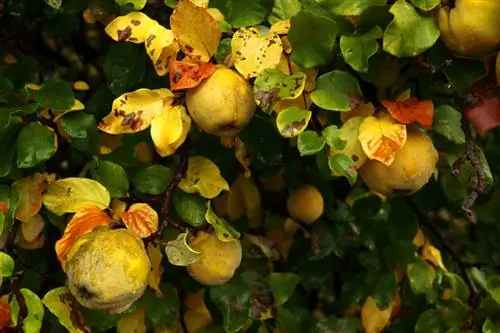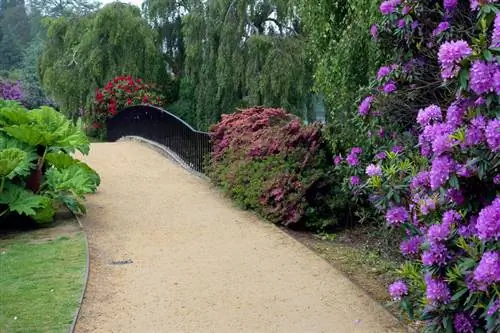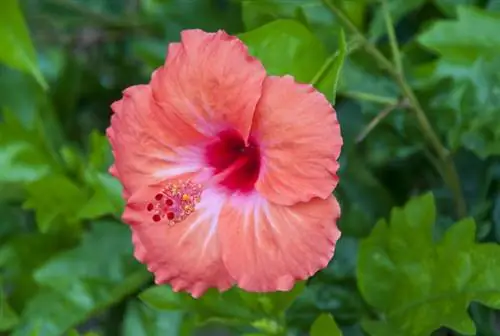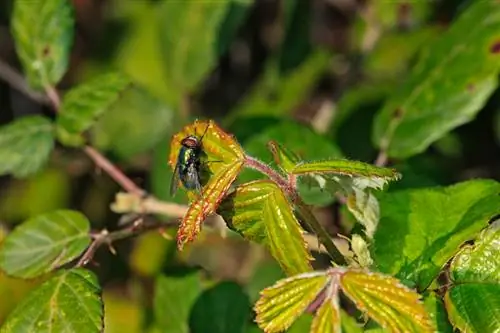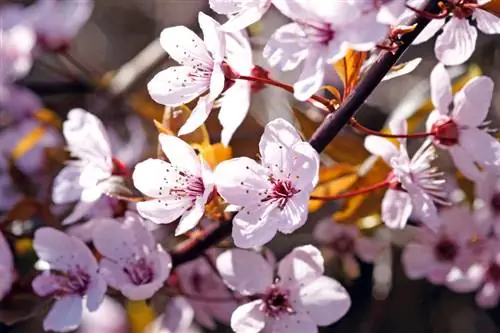- Author admin [email protected].
- Public 2023-12-16 16:46.
- Last modified 2025-01-23 11:20.
With the right location, strong quinces thrive. With the help of practical preventative measures, leaf blight, flesh blight and fire blight infestations can often be prevented. We'll show you how to easily implement these in your home garden.
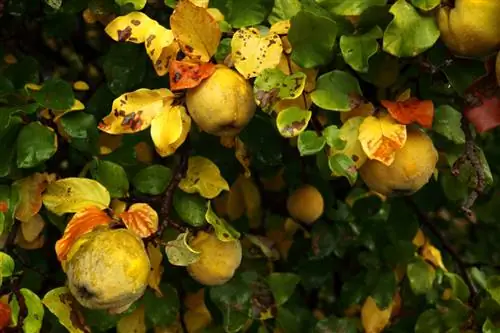
What diseases can affect quince trees?
Common quince tree diseases include flesh blight, leaf blight (also called quince rust), and fire blight. You can prevent it by harvesting on time, removing leaves thoroughly and monitoring the soil. Fire blight is reportable and requires immediate action.
flesh tan
At first glance, this disease is not recognizable. However, it reveals itself when the fruit is cut open. Brown spots run through the entire flesh. The causes of this metabolic disease are strongly fluctuating weather conditions or a delayed harvest.
Prevention:
Harvest the fruits as soon as they turn yellow. It is also advisable to examine the quinces for any damage throughout the ripening period. To do this, cut one picked fruit completely open. There is no effective method to combat the disease.
Maintenance errors:
Flesh tan also occurs when the lime content of the soil is very low. A high nitrogen content can also be a cause.
Leaf Tan
This disease is also known as quince rust. A stubborn fungal infestation becomes visible through damage to the quince leaves. They develop small, dark spots and die early. The main cause is described as the damp weather.
The resistant fungal spores overwinter on the ground. For this reason, old leaves must be immediately disposed of with household waste. In addition, a thinning cut should be carried out in the following year after the last frosts. This ensures effective ventilation of the crown. The leaves dry quickly. The fungus cannot spread.
Caution: fire blight
This disease is probably one of the most dangerous variants. Immediate action is necessary. This will prevent it from spreading to other species. The quince tree is removed from the garden. Dispose of the wood with regular household waste. Under no circumstances should the remains of the sick tree be put in the compost.
Important:
Fire must be reported.
Tips & Tricks
You should keep an eye on small pests. In general, the quince is very robust against these. If there is a severe infestation, it may make sense to use small farm animals, such as the Asian lady beetle (€8.00 on Amazon).

